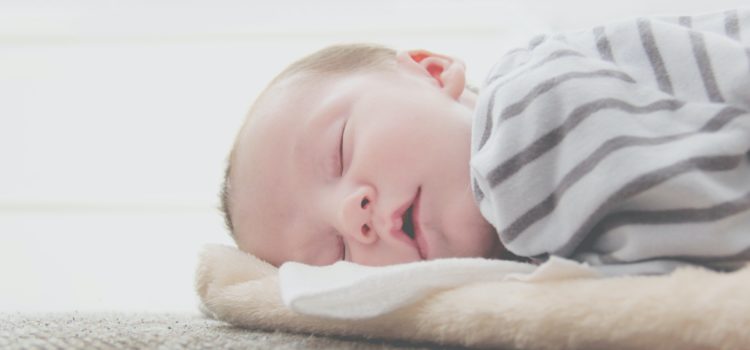

This article is an excerpt from the Shortform book guide to "The Body Keeps The Score" by Bessel van der Kolk. Shortform has the world's best summaries and analyses of books you should be reading.
Like this article? Sign up for a free trial here .
What is infant attachment? Why is it important for babies to form strong and safe attachments to their caregivers?
Babies naturally form attachments with caregivers, and what kind of care they receive shapes their worldview. This is known as infant attachment.
Read more about infant attachment and why having secure and safe attachments is important for infancy and later life.
Infant Attachment: Resilience Builds From Birth
From the moment you’re born, every interaction with your caregivers is forming your understanding of the world and teaching you how to have relationships with others. The biggest predictor of your ability to cope with challenges in life is the security you feel with your primary caregiver during the first two years of your life. Secure attachment in babies is a huge part of this resilience.
Infant Attachment
As a baby, you’re unable to care for yourself and must rely on your caregivers — usually parents — to meet your most basic needs, from food and clothing to safety and comfort. How well your caregivers meet your needs actually determines how well you’ll later take care of these needs yourself. Furthermore, the more responsive your caregivers are to you, the more responsive you’ll be to others later in life.
Parents’ abilities to provide secure infant attachment can be impeded by their own traumas and mental health issues. Children without a healthy attachment tend to dissociate and shut down when they’re older; they feel numb or not real, and may resort to dangerous behavior or self-harm in order to feel something.
Babies are programmed to form an infant attachment, depending upon the kind of caregiver they have.
Secure Attachment in Infants
In a study of how babies reacted to short-term separations from their mothers, scientists Mary Ainswoth and Mary Main found that securely attached babies showed distress when their mothers left the room, but were excited when their mothers returned and quickly settled and continued playing in their mothers’ company. Secure attachment in infants is important for their development.
Children with secure attachments learn to identify what makes them and others feel good or bad. These children also understand when they have control over a situation and when things are out of their hands, and they have a sense of agency, giving them the confidence that they have control over their actions and can impact their circumstances. This is why it’s important to develop secure attachment in infants.
Avoidant Attachment
Avoidant attachment in babies is a form of insecure attachment. These babies were quiet and withdrawn, and never seem to get upset. In the study, avoidantly attached babies didn’t cry when their mothers left and didn’t react when they returned. However, despite their calm exterior, avoidantly attached infants’ heart rates remained high, revealing that they’re constantly in a state of hyperarousal.
Mothers of avoidantly attached babies tend not to enjoy touching, cuddling, or holding their babies, and they fail to use their voices and facial expressions to communicate with their babies.
Avoidantly attached babies tend to become bullies as they get older and become adults who are disconnected from their own feelings as well as others’.
Anxious or Ambivalent Attachment in Babies
This is another form of insecure infant attachment. Anxiously attached babies cry constantly and are clingy and demanding, apparently reasoning that this is the only way to get attention. In the study, these babies were very distressed when their mothers left but didn’t calm down when they returned, and remained focused on their mothers instead of resuming play.
Unsurprisingly, anxious babies tend to grow into anxious adults, who tend to be the victims of bullying by their avoidantly attached peers.
Disorganized Attachment
Secure, avoidant, and anxious attachments are all considered “organized” attachments because they respond to a consistent style of caregiving; although the two forms of insecure attachments create issues, they provide some stability. In contrast, babies whose caregivers cause them fear or distress create disorganized attachment.
When a baby is afraid of her caregiver, she is stuck between needing that caregiver for survival and simultaneously being scared of the caregiver. As a result, the baby doesn’t know how to engage with her caregiver. This is a source of many psychiatric issues.
There are two types of caregivers that foster disorganized infant attachment:
- Caregivers who are too busy with their own problems to attend to their babies’ needs. These caregivers tend to act hostile toward the babies, rejecting them or seemingly expecting the babies to respond to the caregivers’ needs. These caregivers typically have experienced abuse or witnessed domestic violence during their own childhoods.
- Caregivers who are somewhat helpless, incapable of being the adult in the dynamic with their babies. These caregivers looked to their children for comfort, instead of being a source of comfort. These caregivers often have trauma from sexual abuse or loss of a parent.
Children with disorganized attachment often become aggressive or disengaged, and exhibit related physical symptoms, including increased heart rate and stress hormone levels and decreased immune system. As adults, they can’t distinguish who they can trust from who they should fear, so they may either be overly affectionate with strangers or be distrustful of everyone.
Attunement
A caregiver’s emotional attunement — being in synch with the baby’s needs, which helps the baby feel understood and taken care of — is a critical aspect of developing secure infant attachment. If a baby feels hungry and her caregiver promptly offers a bottle, or the baby feels overwhelmed and her caregiver soothes her, the baby learns to associate those intense sensations with feelings of comfort and safety; when those babies grow up, they’ll be better able to self-soothe and self-nurture and less inclined to feel distressed in the face of other intense sensations.
Emotional attunement also fosters physical attunement. Babies can’t calm themselves down through mindful breathing or relaxation exercises. Instead, their caregivers’ competency and attunement provides the comfort and safety that allows babies to calm down: When a baby feels emotionally in sync with her caregiver, her body reflects it with calm breathing, a steady heartbeat, and low stress hormone levels.
On the other hand, babies and children who face abuse and neglect learn that their needs will not be met, no matter how much they cry. This conditions them to become adults who give up in the face of obstacles.
When a caregiver can’t meet a baby’s needs, pediatrician and psychoanalyst Donald Winnicott suggests that the baby adjusts to meet the mother’s capabilities. The baby learns to deny her own inner sensations, eventually learning that there’s something wrong with the way she is in a larger sense. As these babies grow up, they tend to continue rejecting what their bodies tell them; as we discussed in an earlier section, when people are disconnected from their physical sensations, they lose their sense of joy, purpose, and direction in life.

———End of Preview———
Like what you just read? Read the rest of the world's best book summary and analysis of Bessel van der Kolk's "The Body Keeps The Score" at Shortform .
Here's what you'll find in our full The Body Keeps The Score summary :
- How your past trauma might change your brain and body
- What you can do to help your brain and body heal
- Why some trauma survivors can't recognize themselves in the mirror






